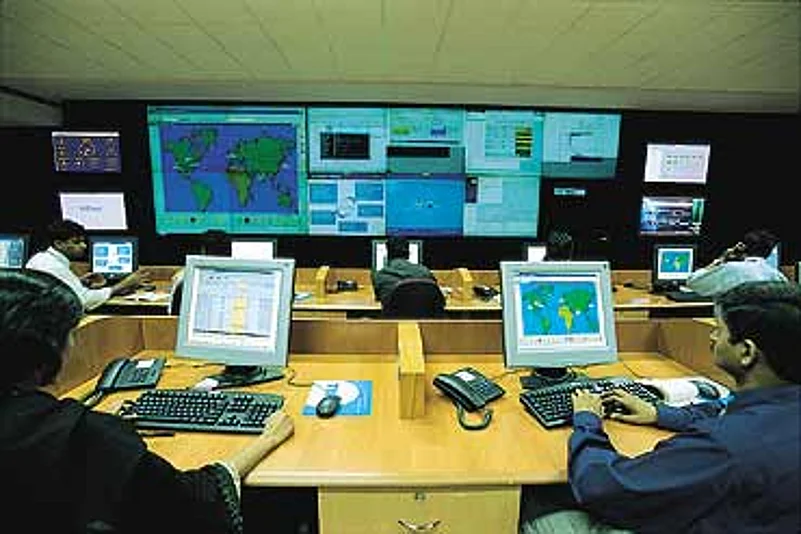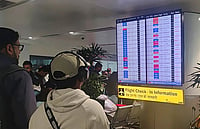
Although higher interest rates do attract more foreign inflows—which is good for the country—they also reduce speculation by acting as a cushion against a price rise of assets like real estate. Already, home loan rates have climbed several notches and consumers are getting jumpy as EMIs (estimated monthly instalments) go up, or mortgage periods get extended. Bankers feel the growth in the home loan market—at around 40 per cent last year—is likely to fall to 20-30 per cent this year.
Explains Kanhaiya Singh, economist at NCAER, "In a way, this is the right way to fight inflation." According to Narendra Jadhav, former chief economist at RBI, the measures "will slow down the process of accumulation of forex reserves leading to a slowing down of monetary expansion, which will have substantial positive impact on containment of inflation". Abhijit Sen ofICRIER thinks that the RBI's policies will yield results in 3-6 months. Basically, the RBI is planning a soft landing for the possibly overheated Indian economy, one that's witnessing high growth with high inflation.
Not everyone agrees with the central bank's optimism though. Exporters are peeved with the way the rupee is behaving as it makes them globally uncompetitive. For now they earn less rupees for the same dollars, and also are unable to increase dollar prices of their products due to competition from other exporting nations. Ganesh Gupta, president, Federation of Indian Export Organisations, contends that the appreciating rupee has started taking its toll on exports, which have slipped to single-digit growth after showing a 24 per cent rise in the April-November 2006 period.
Moreover, export margins have dipped too. Many exporters who shipped their products a few months ago, when the rupee-dollar rate was Rs 44-46, are expecting payment at the current Rs 40-41 rate. This is because payments are received within 3-6 months of shipment. "Exports are not shining now," says a categorical Gupta. He feels that while handicrafts is likely to witness a negative growth rate, gems and jewellery and textiles will show a single-digit growth of 5 per cent and 7 per cent respectively.
The other big sufferer will be the software sector, where the majority of earnings come through dollar exports. Pai feels that every single per cent increase in the rupee impacts the bottomlines of the software firms by half a per cent. Adds Lindow, "The flows have contributed to a loss of external competitiveness and emerging foreign currency mismatches on the balance-sheets of Indian private sector borrowers".

Thanks to high margins, software may absorb the rupee impact
However, a few experts think the impact will be minimal. Argues Ajay Shah, former consultant to the finance ministry, "Indian companies have enough headroom to absorb some adverse currency movements. India's productivity gains are drowning out the currency story." Similarly, Pai feels that software firms have impressive growth rates and, therefore, the rupee will not hit their bottomlines significantly.
Others say the rupee hasn't appreciated much against other currencies like the euro and pound, so India's exports to Europe will remain competitive. Agrees commerce secretary G.K. Pillai, "Last year, a drop in the rupee didn't affect our exports. If the rupee stays around Rs 41 to a dollar, it shouldn't make any difference to our exports prospects. It could be a cause for concern if it goes below Rs 40."
What India Inc is bothered with is that the combined effect of high inflation, interest rates, forex reserves and dollar-rupee rate does not impact demand and investments. For that will slow down growth, reduce corporate earnings, de-rate the stockmarket indices further and affect other asset categories like real estate. The multiplier effect could even result in stagflation—stagnant GDP growth with high inflation. Says NCAER's Kanhaiya Singh, "The problem is that the economy is being pushed into a high interest rate regime."
Several experts feel that both the finance ministry and the RBI are being forced to pursue short-term tactics to fight inflation in an election year. The thinking within the Congress party is that it has lost a few state elections because of rising prices of basic items like foodgrains. Therefore, fire-fighting the price rise has become an overriding objective of the government. But as a few CEOs and senior managers told Outlook, "Any panicky short-term measures are not desirable and will precipitate adverse results."
RBI's Reddy and FM P. Chidambaram are in an unenviable position. They have to spur growth by wooing investments. They have to control inflation by pushing up interest rates, controlling demand, and allowing the rupee to appreciate. But a strong rupee can stymie exports—and demand—and affect growth. This can slow down foreign capital flows and impact investments and growth. The only hope for the two policymakers is that the Indian economy and its private sector is mature and strong enough to absorb the short-term adverse effects and continue on their growth trajectory.


























